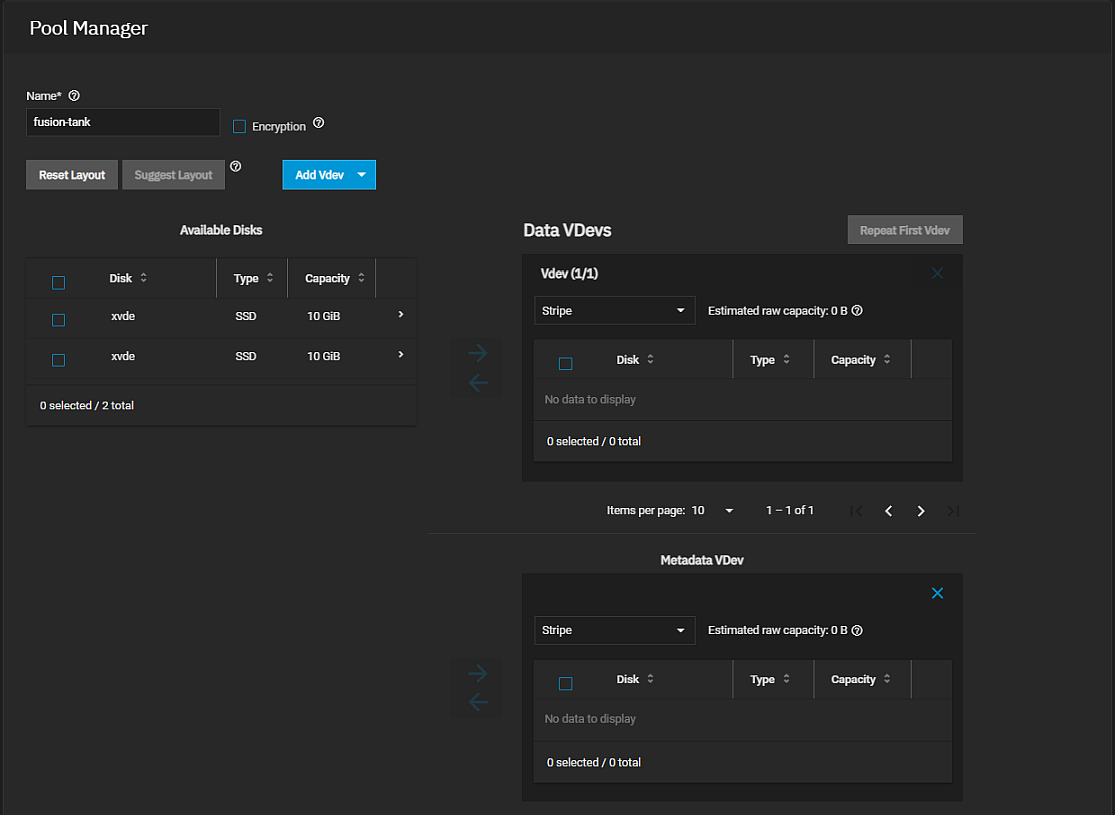Fusion Pools
3 minute read.
Fusion Pools are also known as ZFS allocation classes, ZFS special vdevs, and metadata vdevs (Metadata vdev type on the Pool Manager screen.).
Go to the Storage Dashboard and click Create Pool.
A pool must always have one normal (non-dedup/special) VDEV before you assign other devices to the special class.
Enter a name for the pool using up to 50 lowercase alpha-numeric and permitted special characters that conform to ZFS naming conventions. The pool name contributes to the maximum character length for datasets, so it is limited to 50 characters.
Click ADD VDEV and select Metadata to add the VDEV to the pool layout.
Add disks to the primary Data VDevs, then to the Metadata VDEV.

Add SSDs to the new Metadata VDev and select the same layout as the Data VDevs.
Metadata VDEVs are critical for pool operation and data integrity. Protect them with redundancy measures such as mirroring, and optionally hot spare(s) for additional fault tolerance. It is suggested to use an equal or greater level of failure tolerance in each of your metadata VDEVs; for example, if your data VDEVs are configured as RAIDZ2, consider the use of 3-way mirrors for your metadata VDEVs.
Using special VDEVs identical to the data VDEVs (so they can use the same hot spares) is recommended, but for performance reasons, you can make a different type of VDEV (like a mirror of SSDs). In that case, you must provide hot spare(s) for that drive type as well. Otherwise, if the special VDEV fails and there is no redundancy, the pool becomes corrupted and prevents access to stored data.
While the metadata VDEV can be adjusted after its addition by attaching or detaching drives, the entire metadata VDEV itself can only be removed from the pool when the pool data VDEVs are mirrors. If the pool uses RAIDZ data VDEVs, a metadata VDEV is a permanent addition to the pool and cannot be removed.
When more than one metadata VDEV is created, then allocations are load-balanced between all these devices. If the special class becomes full, then allocations spill back into the normal class. Deduplication table data is placed first onto a dedicated Dedup VDEV, then a Metadata VDEV, and finally the data VDEVs if neither exists.
Create a fusion pool and Status shows a Special section with the metadata SSDs.



